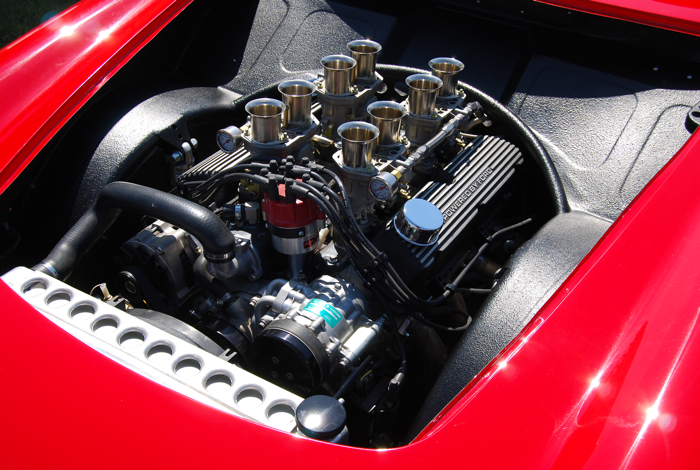Comprehensive Evaluation of a Subcompact Auto's Powertrain Capabilities
In the realm of automotive engineering, the powertrain of a subcompact automobile stands as an important nexus where performance, performance, and advancement converge. From the engine's ruthless pursuit of optimum performance to the transmission's smooth choreography of power circulation, every element plays an essential duty in specifying the total driving experience.
Engine Performance Evaluation
In assessing the engine performance of the subcompact cars and truck, a detailed evaluation exposes its performance and power outcome under numerous driving conditions. The subcompact cars and truck's engine, an essential part of its powertrain system, demonstrates commendable performance metrics. The engine's efficiency is noteworthy, as it maximizes gas usage without endangering power delivery. Under typical driving problems, the engine runs smoothly, showcasing an equilibrium in between efficiency and gas economy.
In addition, when based on strenuous testing circumstances such as high-speed velocity or uphill climbs, the engine demonstrates strength and responsiveness. Its power result remains regular, supplying sufficient velocity when required. The subcompact cars and truck's engine is tailored to fulfill the needs of urban driving, where quick acceleration and nimble ability to move are crucial.
Additionally, the engine's design includes contemporary innovations that enhance its performance characteristics. Features like turbocharging or variable valve timing add to improved power delivery and torque, improving the general driving experience. Finally, the engine performance of the subcompact automobile highlights its ability to provide effective and trustworthy power outcome across numerous driving conditions.
Transmission Performance Examination
Examining the subcompact cars and truck's transmission performance entails assessing its efficiency in transmitting power effortlessly throughout various driving conditions. The performance of a transmission system is important as it straight influences the total performance and fuel economic climate of the automobile. In reviewing transmission performance, aspects such as equipment proportions, shift timing, and the smoothness of equipment adjustments are thought about. A properly designed transmission system must properly supply power from the engine to the wheels while decreasing power losses.
One typical technique used to evaluate transmission effectiveness is via dynamometer testing, where the power result from the engine is determined at the input and result shafts of the transmission. By examining these aspects, designers can identify locations for enhancement and enhance the transmission system for far better total performance and performance.
Fuel Performance Assessment
The assessment of the subcompact car's gas effectiveness involves an extensive evaluation of its intake prices under different driving problems. Gas effectiveness is an essential consider assessing the total efficiency and cost-effectiveness of a vehicle. By determining the quantity of fuel taken in each range took a trip, normally shared as miles per gallon (MPG) or litres per 100 kilometers (L/100 kilometres), the efficiency of the subcompact cars and truck's powertrain can be figured out.

Furthermore, improvements in innovation, such as crossbreed systems, regenerative stopping, and automatic start-stop systems, have significantly enhanced fuel effectiveness in modern-day subcompact cars. Manufacturers proceed to introduce and maximize powertrain components to enhance gas effectiveness while fulfilling performance demands and environmental guidelines. Examining a subcompact automobile's fuel efficiency provides important understandings for customers looking for cost-effective and sustainable transport remedies.
Velocity and Handling Assessment
An integral facet of examining the efficiency capacities of a subcompact auto hinges on examining its velocity and managing qualities. Velocity is essential you can find out more as it identifies how promptly the automobile can reach desired rates, impacting general driving experience and ability to move in different traffic problems. opel corsa engine. Subcompact cars are frequently preferred for their nimbleness and agility, making velocity from dead stop and during surpassing maneuvers important factors to think about
When it concerns handling, a subcompact cars and truck's capability to browse corners, keep security at broadband, and provide a receptive steering feel are vital. Limited city streets and winding roads need accurate managing to make certain motorist self-confidence and safety. Aspects such as suspension adjusting, weight circulation, and tire grasp play significant duties in identifying a subcompact auto's overall handling prowess.

Powertrain Components Summary
Upon delving into the details of a subcompact car's efficiency, a comprehensive examination of its powertrain parts is necessary to realize the automobile's mechanical supports. The powertrain of a subcompact car usually consists of the engine, transmission, driveshaft, differential, and axles. Understanding just how these parts work with each other is critical in analyzing a subcompact cars and truck's total performance, effectiveness, and driving dynamics.
Verdict
Finally, the subcompact car's powertrain capacities have been thoroughly assessed in terms of engine efficiency, transmission check my source efficiency, fuel efficiency, handling, and acceleration. The comprehensive testimonial highlights the importance of each element working together seamlessly to provide ideal efficiency. On the whole, the powertrain parts of the subcompact car have been discovered to be reliable and healthy, making it a trusted option for chauffeurs seeking a compact and fuel-efficient vehicle.
In the realm of auto engineering, the powertrain of a subcompact cars and truck stands as a vital nexus where efficiency, performance, and innovation merge.In assessing the engine performance of the subcompact automobile, an extensive evaluation discloses its performance and power result under numerous driving problems.Examining the subcompact vehicle's transmission efficiency includes evaluating its performance in transferring power effortlessly across various driving problems. Comprehending exactly how these components work with each other is critical in analyzing a subcompact auto's total efficiency, effectiveness, and driving dynamics.In conclusion, the subcompact car's powertrain capacities have been extensively analyzed in terms of engine performance, transmission efficiency, fuel velocity, performance, and handling.